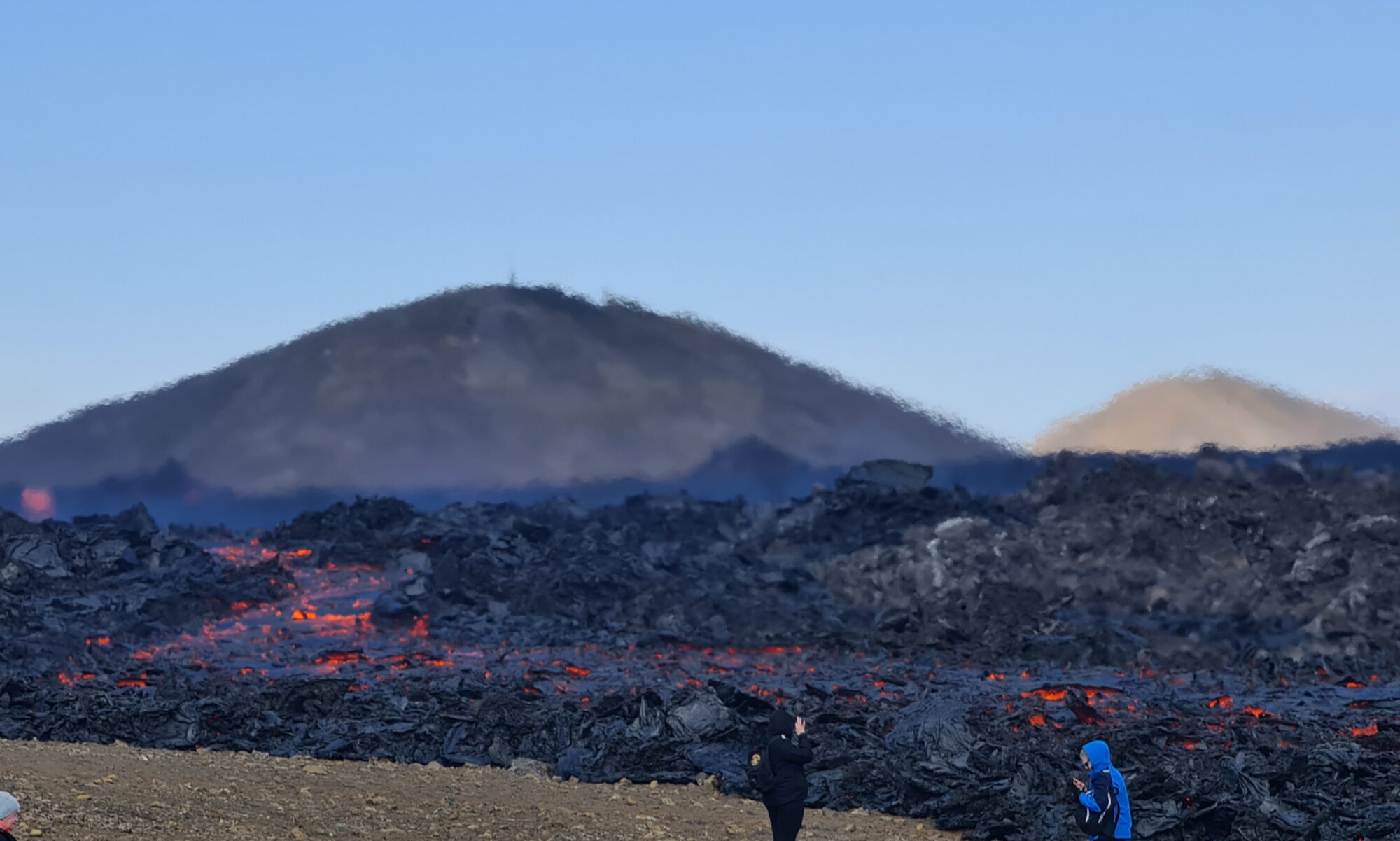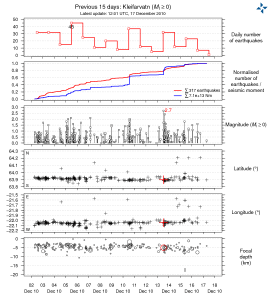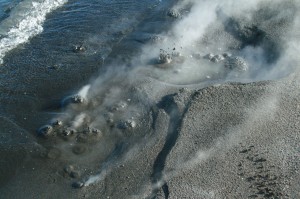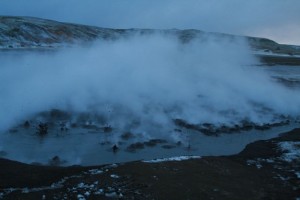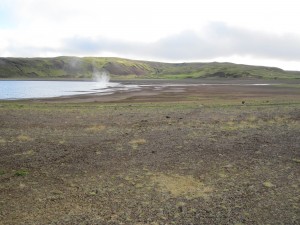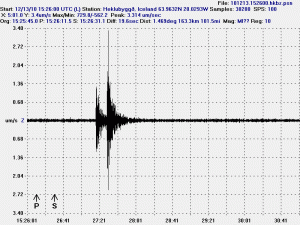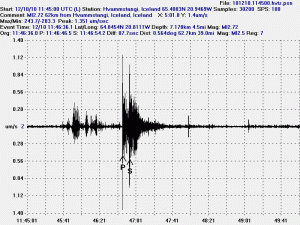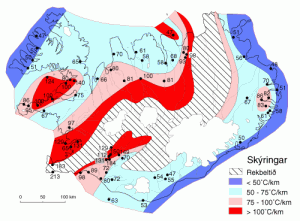The earthquake swarm that started two days ago at Arnarvatns highlands continues in similar manner as was seen in the earthquake swarm that took place under Blöndulón lake few weeks ago.This earthquake swarm is taking place in a fracture zone known as West Iceland Fracture Zone (WIFZ). But that fracture zone sits between East Iceland Rift Zone and Snæfellsnes volcano zone. This area is known for strong earthquakes, but in the year 1974 there was a magnitude earthquake that had the size Mb5.5 to Mw6.1 (I am not sure on the exact size of this earthquake). According to news there is speculation that this earthquake swarm is somehow connected to the earthquake swarm that did happen under Blöndulón lake few weeks ago. This area is unpopulated and several tens of km to next farm in this area.
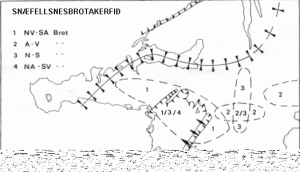
Click on the picture of better resolution. Picture is taken from here (Icelandic).
Explanation for the numbers in the picture. The number account for the fracture direction in the area. 1: Northwest-Southwest fracture. 2: West-East fracture. 3: North-South fracture. 4: Northeast-Southwest fracture.
Where the earthquakes are currently taking place are on the west-east fractures in the area. There are no active volcano where the earthquakes take place that I know of. The active volcanoes are south and west (Snæfellsnes volcanoes) of the current location of the earthquakes.
Currently is unclear if this activity did trigger earthquakes in the rift zone. That is Thingvellir and nearby areas that show earthquakes on IMO maps. This might just be poor locations from the SIL system. It is also a question if this earthquake activity is the reason for earthquakes close to Geysir (volcano) geothermal area.
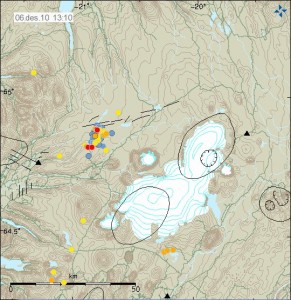
Click on the picture for a full resolution. Picture is from Icelandic Met Office web site.
The earthquake swarm at 13:10 on the 6th of December 2010. Picture is from the IMO web site.
At current time is remains unclear if this earthquake activity is a pre-events before a bigger earthquake in this area. But about ten years ago there was a earthquake swarm south of this location with many earthquakes reaching ML4.0+ in size. But in any case it is worth keeping tab in this earthquake activity, as it might signal more interesting times ahead in this area. But that is just speculation on my part. Earthquake activity might fall down to nothing (normal for this area) in a short time span.
Due to how fractured this area appears to be. I am not recording the earthquakes in this area properly, as the energy of the earthquake wave appears to vanish rather quickly due to the fractures that are between me and the earthquakes that take place (the wave energy that goes north in this case). But this was not the case with earthquake swarm that took place in Blöndulón lake.
Icelandic News of this earthquake swarm. Use Google Translate at own risk.
Skjálftahrina stendur enn yfir (Rúv.is)
Skjálftavirkni á Arnarvatnsheiði (mbl.is)
Text updated at 13:57 UTC on 6th of December 2010. Minor error fixed.
Text updated at 08:33 UTC on 9th of December 2010. Error fixed.
